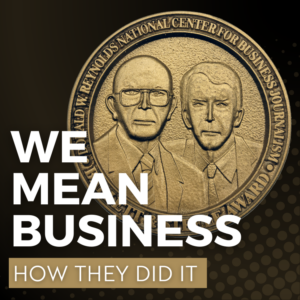Sustainable fashion—fashions made from sustainable textiles, fabrics and in an ethical, humane way—have taken off. Big companies like Eileen Fisher now make 84 percent of their collection with organic cotton and mammoth fashion retailers such as H&M issue annual sustainability reports. This blog outlines some ideas and themes for business reporters to tackle as they report on this business trend.
Cite the data
Anyone concerned about sustainable fashion is also interested in the environment. Therefore, within your reporting, pull out key numbers. Consider the following data:
- According to Deloitte, the Danish Fashion Institute, fashion trumps almost all other industries when it comes to pollution and waste.
- Only the oil industry pollutes more than fashion, that same report says.
- Note also, 25 percent of textile chemicals are produced by the fashion industry.
- Fashion pollutes water almost as much as agriculture, the world’s largest water polluter.
Tap into the trends and concerns within the industry
As part of your reporting, ask your sources at both fashion houses and retailers what elements of fashion production would they most like to change. This question often elicits a desire to better understand the supply chain. In one report, Baptist World Aid Australia, a nonprofit, found that 61 percent of global fashion companies had no idea where their garments were made. Another 76 percent couldn’t say where their fabric was woven or dyed. A whopping 93 percent did not know where their raw fibers originated from. Use the responses to this question to direct your reporting.
Cover the news within the larger players
Concerns like these inspired one nonprofit, Canopy, to work with large fashion design houses including H&M, Stella McCartney, and Zara to produce rayon and viscose products that don’t endanger rain forests. (The pulp going into the rayon frequently comes from that source.) Because of this group’s findings, H&M and Zara, two massive fashion retailers, no longer source their rayon from endangered rain forests. Noting that leather sent to landfills creates problems due to the harmful chemicals added during the tanning process, more companies and designers are creating shoes from sustainable fabrics. One company, Love Your Footprint, aims to make shoes using sustainable fabrics and avoiding harmful glues. Fashion retailers like Ann Taylor have created health and financial education programs like the Responsibly Ann commitment to ensure the women working in their factories become better educated and can better plan their families.
Report on the human element
The fashion industry is notorious for exploiting its factory workers. Any report about sustainable fashion must keep up with what companies are doing to ensure they treat their workers in an ethical manner and pay them a reasonable wage. This type of reporting can uncover surprising stories. For example, a U.K. magazine launched a special feminist edition by printing T-shirts with the tagline, “This Is What a Feminist Looks like.” The T-shirt maker came under fire when a UK newspaper, the Daily Mail, discovered the expensive T-shirts were made by women earning 6,000 rupees a month ($90 U.S.) in Mauritius. International Women’s Day also triggers investigative reports and thoughtful opinion pieces on the female factory workers making our clothes.
Reporter’s Takeaway
- Start with the numbers. The Danish Fashion Institute is an excellent source of statistics about clothing manufacturers and the environment.
- Look for human elements within your reporting. Consider themes such as ethical treatment and payment of employees, supply chain problems such as sourcing rayon and other fabrics from endangered rain forests.
- Monitor the news from the larger players. Note that big fashion retailers like H&M now offer annual sustainability reports full of story ideas for business reporters.











